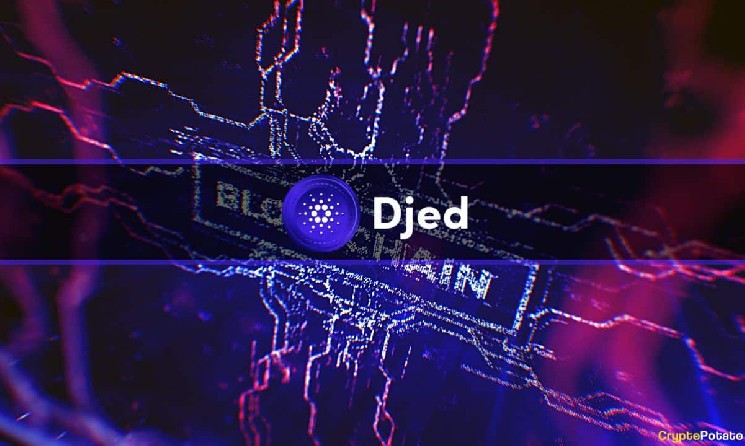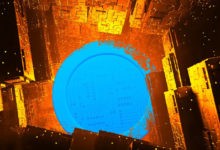A Look at Cardano’s Overcollaterized Stablecoin Djed

Stablecoins have been one of the most controversial areas of the cryptocurrency industry. But this has not deterred industry leaders to bring about new pegged tokens built on a secure foundation.
The much-awaited Djed – which happens to be Cardano’s native overcollateralized stablecoin – is set to launch this week. Developed jointly by the layer 1 blockchain network, COTI, along with core Input Output Global (IOG) devs, the stablecoin is expected to benefit the overall Cardano $77.2 million DeFi market.
Djed’s Launch
The ADA-backed stablecoin would deploy on the mainnet following the completion of chain index syncing. The process takes around 14 days to complete and was started more than a week, according to COTI’s blog post.
At launch, Djed is expected to go live on more than 40 Cardano-based decentralized finance applications. Simultaneously, developers have also come up with a payment application called – DjedPay – enabling users to transfer the tokens to merchants and businesses.
Meanwhile, Djed and its Shen token will list on two Cardano-based decentralized exchanges (DEX) – MuesliSwap and MinSwap – after their issuance this week. For context, Shen is the reserve token meant to support Djed’s stability. It would rake in extra rewards when ADA holders stake their coins to mint the stablecoins, thereby fueling liquidity for the ecosystem.
Difference Between Djed and UST
The main utility of stablecoins is to keep away from the turbulence of pure-play cryptocurrencies. However, the infamous TerraUSD crash last May turned out to be not just another failed stablecoin experiment but also acted as a catalyst for the catastrophic turn of events that followed later that year.
Djed has been touted as the “first stablecoin protocol where stability claims are precisely and mathematically stated and proven.” Algorithmic stablecoins are typically partially undercollaterized. Djed, on the other hand, is expected to maintain stability by being 400% to 800% overcollateralized at all times.
The official site also revealed that the contract has enough money to buy back all the Djed stablecoins in circulation for $1 worth of the backing asset, thus maintaining the peg.
Aside from being fully backed and overcollateralized with a significant reserve ratio, Djed is also autonomous. This is in contrast to the Terra, where the network was halted at some point, and the BTC reserves were managed manually. However, Djed operation does not depend on decisions by a group of people, according to COTI’s Community Manager, Vlad Ovadenko.
Even as ADA will provide the external collateral, Shen will be used as liquidity to maintain the peg price if the former’s price fluctuates and the potential for insufficient ADA to pay Djed holders willing to cash out. As such, $1 worth of ADA always equals $1 worth of DJED.
Shedding more light on the revenue model, Ovadenko said,
“Terra LUNA holders earn money from seigniorage and have the incentive to encourage projects like Anchor, that artificially keep stablecoins out of circulation, promising future yield, $Shen holders earn money through mint/burn fees. In this way, there is an incentive to encourage stablecoins to remain in circulation and to be burned and minted frequently through the contract.”






 Bitcoin
Bitcoin  Ethereum
Ethereum  Tether
Tether  USDC
USDC  TRON
TRON  Dogecoin
Dogecoin  Cardano
Cardano  Bitcoin Cash
Bitcoin Cash  Chainlink
Chainlink  Monero
Monero  LEO Token
LEO Token  Zcash
Zcash  Stellar
Stellar  Litecoin
Litecoin  Hedera
Hedera  Dai
Dai  Cronos
Cronos  Tether Gold
Tether Gold  OKB
OKB  Ethereum Classic
Ethereum Classic  KuCoin
KuCoin  Gate
Gate  Algorand
Algorand  Cosmos Hub
Cosmos Hub  VeChain
VeChain  TrueUSD
TrueUSD  Dash
Dash  Tezos
Tezos  Stacks
Stacks  IOTA
IOTA  Basic Attention
Basic Attention  Decred
Decred  Theta Network
Theta Network  NEO
NEO  Synthetix
Synthetix  Qtum
Qtum  Ravencoin
Ravencoin  0x Protocol
0x Protocol  DigiByte
DigiByte  Nano
Nano  Zilliqa
Zilliqa  Siacoin
Siacoin  Numeraire
Numeraire  Waves
Waves  Status
Status  BUSD
BUSD  Enjin Coin
Enjin Coin  Pax Dollar
Pax Dollar  Ontology
Ontology  Hive
Hive  Lisk
Lisk  Steem
Steem  Huobi
Huobi  NEM
NEM  OMG Network
OMG Network  Bitcoin Gold
Bitcoin Gold  Augur
Augur  Ren
Ren  HUSD
HUSD